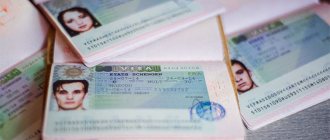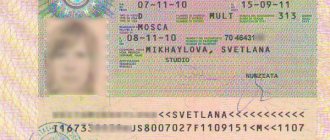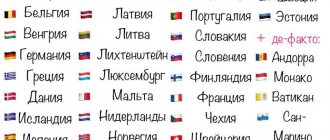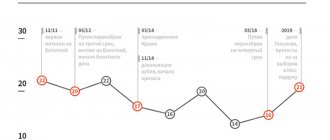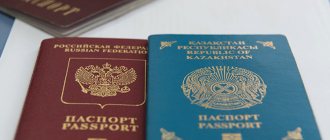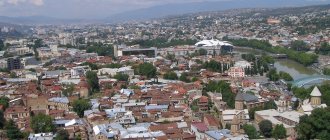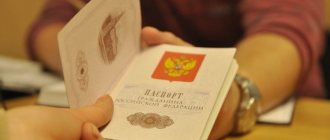It’s possible to complete and submit documents once, and then travel around Europe unhindered for five years. A Schengen multiple visa valid for five years is increasingly being issued to our compatriots who actively visit European countries. Getting greater freedom of movement, it is necessary to more carefully monitor compliance with visa rules, so as not to violate legal requirements and not get on the Schengen blacklist.
Map of Schengen countries
Schengen multiple visa or travel as a way of life
Tourists, especially beginners, are very frightened by the process of obtaining permits to enter the countries participating in the Schengen Agreement. An unfamiliar procedure, many nuances, strictness of consulate staff. But at the same time, the Schengen multivisa is the most cherished, but also the most unattainable dream of everyone who is in love with Europe and travel.
The process is complicated by the fact that it can be obtained at almost any consular department of each of the 26 countries party to the agreement. It is the huge choice that becomes the stumbling block. Many questions arise: which country should you choose for processing documents, how to use a visa correctly, what restrictions exist.
Some European Union countries issue multiple visas for 2 years to almost every tourist, while some can only issue a visa for the duration of the trip, for example, 30 days. The situation is heated by constant changes in visa legislation. 2021 will not be an exception for Russians.
List of Schengen countries
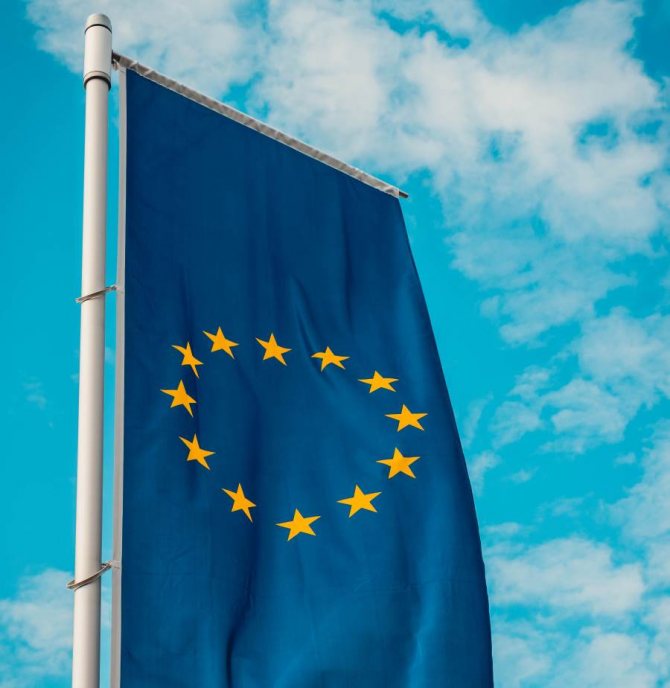
The Schengen agreement was signed in 1985 by the BENELUX countries, Germany and France, but subsequently the list of participants expanded. At the time the Schengen agreement was signed, the list of states until 1995 included a small number of countries, but by 2021 the list has become wide. in the multivisa countries :
- Switzerland
- Hungary
- Czech
- Germany
- France
- Belgium
- Spain
- Austria
- Poland
- Malta
- Norway
- Sweden
- Portugal
- Luxembourg
- Denmark
- Estonia
- Latvia
- Greece
- Lithuania
- Italy
- Liechtenstein
- Iceland
- Finland
- Netherlands
- Slovakia
- Slovenia
You may be interested in: Visa to Croatia for Russians: application, deadlines, cost
The list of countries included in this list is constantly updated. By applying for a multiple visa, you have the opportunity to visit any of the 26 countries on this list.
Multiple visa - multiple possibilities
Obtaining a Schengen multiple visa is the dream of every tourist who loves to vacation in Europe. Multiple entries, the possibility of frequent trips without issuing a separate visa for each, as well as time saved - all this is provided by a Schengen visa with the coveted “MULT” inscription.
The Schengen multiple entry visa is often confused with a national visa or residence permit due to its long validity period. But in fact, a multiple visa is a regular Schengen visa of category C, which every tourist applies for to travel to the countries of the European Union. Despite its long period, there are restrictions on the number of days allowed for stay in the European Union.

A multiple visa gives the right to multiple entries into the territory of the European Union. It is up to the tourist to decide whether to come once for 90 days or 10 times for 9 days. While a single-entry visa will allow you to enter Europe only once, travel around neighboring countries for the amount of time indicated on the visa, and return home.
It will no longer be possible to re-enter Schengen territory using this document. Even the fact that out of the 30 days that the visa is valid, you spent only a few days abroad will not be an argument. That's why it's a one-time thing.
It is also worth noting that a multiple visa does not give the right to work and study, and it cannot be extended while directly in the EU.
Validity period of the Schengen multiple visa
Today there are several urgent multivisas:
- up to 3 months
- for 6 months;
- for 1 year;
- for 2 years;
- for 5 years.
However, this does not mean that a Schengen holder will be able to enter the zone once and stay there continuously for that entire time. Each visa issued, in addition to the period for which it is issued, has a certain number of days that the holder can spend abroad every six months. Usually 45 and 90 days are indicated for every 180.
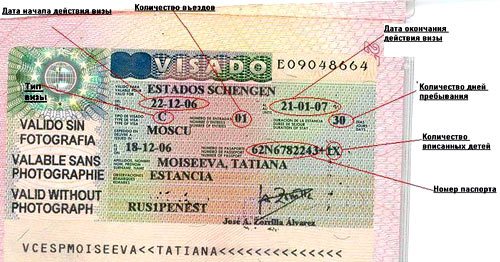
Designations on a Schengen visa
The rules for counting days spent on the territory of participating countries have changed, and in 2021 they will operate according to the following scheme.
- The date of visa issuance is the date of actual receipt of the document in hand at the consular section of the embassy. It is neither the visa opening date nor the beginning of the semester. As a rule, several months are given before the immediate activation of a Schengen multiple visa.
- The first border crossing and receipt of the first entry stamp is the visa activation date. The countdown of the first half of the year begins with it. This period is in no way tied to the traditional calendar division. Each traveler has a different six-month period.
- If the visa is valid for 2 years, and the number 90 is indicated on the card itself, this means that every six months for two years, you have the right to spend 90 days abroad.
- The date of first entry and the date of first exit from the Schengen zone determine the boundaries of the first time period. There can be quite a lot of such segments. Adding them up for the entire period of validity of the visa, you will get the number of days spent abroad. Those same 45 or 90 days.
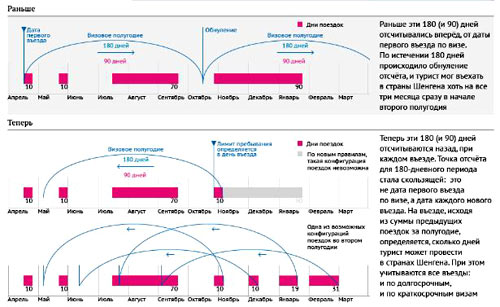
- If the limit on the number of days has been exhausted, but the visa is not yet valid, you still cannot use it. Even if they don’t notice this when crossing the border and put the necessary stamps, then when you receive the next multiple visa to Europe you will have serious problems: it may not be issued to you at all for the next 10 years. Therefore, it is in the interests of the tourist to independently and very carefully monitor the number of days used on a multivisa. For this purpose, various services have been invented, including visa calculators.
- Sometimes it is necessary to calculate how many days in the Schengen zone were spent in a certain country. To do this, use the dates on stamps directly from the country that needs to be tracked.
The rules for counting days have changed somewhat; this had to be done in order to remove a loophole in the law that allowed tourists to spend six months continuously abroad while holding an annual multiple visa.
Schengen visa - rules and nuances
When obtaining a Schengen visa, there are a number of rules and nuances, sometimes slightly different depending on the chosen country. Be sure to study these rules and nuances on the consulate website to avoid visa refusal or problems at the border!
What kind of Schengen visa is there?
There are the following types of Schengen visa: short-term tourist, multiple-entry, student or work. In this article we will look at a standard tourist visa and a multiple visa without the nuances of obtaining a student or work visa.
Schengen visa cost
The cost of a Schengen visa is the official amount of the consular fee of the embassy of the selected country. In most cases, the consular fee is 35 euros. If an urgent visa is required, the consular fee will be 70 euros. Children under 6 years of age receive a visa free of charge. When applying for a Schengen visa not at the country's consulate, but through a visa center, a visa center service fee will be added. When registering with the help of third-party companies or travel agencies, their fee will also be added. If you are denied a visa, or for some other reason are not allowed into the country even with a visa received, the money paid for the visa will not be returned.
Requirements for a foreign passport
When applying for a Schengen visa, your passport must be valid for at least 3-6 months after the end of the planned trip. The passport and photograph in it must not be damaged. Children must be included in the parents' passport, or it is better to have their own passport, which also complies with the rules described above.
Biometrics
Since September 2015, to obtain a Schengen visa it is necessary to undergo biometrics. Biometric data collection involves scanning your fingerprints and taking photographs directly at the consulate or visa center. Accordingly, a personal visit to undergo the first biometric procedure cannot be avoided. Biometrics are valid for 5 years. That is, over the next 5 years you can obtain a Schengen visa without repeat biometrics, including at visa centers and through third-party companies without your personal presence. Biometrics is free. Fingerprints are scanned by a special device according to a specific procedure, which requires you to clearly and quickly follow the operator’s commands. The skin on the fingers should not be dry and, if necessary, moisturize with a special lotion on the spot. Children under 12 years of age are exempt from fingerprinting (but not photography).
Video on YouTube channel:
Visit our video gallery:
All videos
Subscribe to YouTube channel:
Look
Appearance
When applying for a visa, it is better to have a neat, presentable appearance and communicate competently and calmly during the interview. If you are sloppily dressed, drunk, uncultured, aggressive or very nervous, you risk being denied a visa.
When to apply for a visa
Documents for a Schengen visa can be submitted no earlier than 90 days before the planned trip. And due to the processing time for a visa application, it is recommended to submit documents no later than two to three weeks before your planned trip. The earlier the better.
Processing times for a visa application
As a rule, a visa application is processed within 4-5 working days and in rare cases can be extended to 30 working days if additional checks are necessary. When submitting an application, take into account not only weekends, but also holidays of the country in which you are receiving the visa, since the embassy works according to the calendar of its country, not the Russian Federation. An urgent application is usually processed within 2-3 calendar days.
For how long is a Schengen visa issued?
If you are applying for a Schengen visa for the first time, then you will almost certainly be given only a short-term single-entry visa only for the duration of your trip (plus a small reserve of about 14 days). If during your trip you plan to leave the Schengen zone for a neighboring country (for example, on an excursion from Greece to Bulgaria or from Slovenia to Croatia), be sure to mention this when submitting your application so that you will be issued a double-entry visa. If you already have at least 2-3 Schengen visas in your passport over the last 3 years, then you have a chance of getting a multiple-entry visa for six months or a year. If you travel a lot and have several already redeemed Schengen visas in your passport, then your chances of receiving a two-year or three-year multivisa increase.
But keep in mind that the period of stay in the Schengen zone in any case cannot exceed 90 days within six months!
How to get a multiple visa
Based on our own experience and the experience of familiar travelers, we provide below life hacks and recommendations that make it easier to obtain a Schengen visa and multiple-entry visa:
Apply for a Schengen visa to those countries where it is easier to obtain (see below) Having received a couple of visas from one country, apply there for a multiple-entry multiple visa Try to travel around Europe longer - not 2-3 days, but one or two weeks Try to travel to Europe more often, so that over the last 3 years you have several Schengen visas in your passport. It is better to use a new type of international passport. In addition to the fact that it is more modern, wear-resistant and secure, it is also valid for 10 years instead of five, therefore all your previous visas will be collected in one passport. If you traveled to Europe with an old passport, then after its expiration date do not throw it away and do not return it for a new one - you will need it to make copies of old visas when receiving new ones. Use the visas you receive - an outstanding visa in your passport is not advisable. Do not violate visa rules (including first entry and maximum stay rules), customs regulations, traffic regulations and European laws.
Which country is easier to get a visa for?
According to our experience and the experience of familiar travelers, the easiest way to obtain a Schengen visa and multiple entry visa is to the following countries: Greece, Finland, Spain, Italy, Czech Republic, Slovakia... It is in these countries that the requirements for documents, confirmation of hotel bookings and financial resources are lower.
First entry and maximum stay rule
Even though you have the right to travel with one visa to all Schengen countries, this does not mean that you can get a visa for one country and go to another.
For example... If you book flights and hotels in Spain to obtain a Spanish visa, and then rebook everything and go to France with a Spanish visa, without ever reaching Spain, you will most likely have problems with at least entry into France and obtaining a Spanish visa in the future.
You need to get a visa (both short-term and multiple-entry) either to the country of entry or to the country where you plan to stay the longest, if this is a trip through several countries.
For example... If you are planning a trip to Spain for two weeks, stopping on the way for several days in Poland, Germany and France, then you can apply for both a Spanish and a Polish visa for the entire duration of the trip - there will be no problems.
But after correctly opening a visa, further trips can be made to absolutely any Schengen country, if you have a multiple-entry visa in your hands, of course.
Visa for children and minors
As we have already said, there is no need to pay a consular fee or a visa center fee for a visa for children under 6 years of age! But to obtain a visa and cross the border, you will need the original birth certificate of the child. Besides:
If a child is traveling not with his parents, but with an accompanying person (for example, a grandmother), then the child must have his own passport and notarized permission for the child to leave from both parents.
If a child is traveling with one parent, then the child must have his own passport or it must be entered in the parent’s passport, plus a notarized permission for the child to travel from the second parent, including if the parents are divorced.
If a child is traveling with both parents, then the child must have his own passport or it must be included in the parents’ passports. Notarized permission in this case is not necessary, but...
We strongly recommend that your child obtain their own international passport and TWO notarized permissions for the child to travel from BOTH parents, even if the child is traveling with mom and dad! If there are several children, then it is better to make separate notary permissions for EACH child! Why? If a force majeure situation arises (for example, if one of the parents or children is forced to leave early or stay in a hospital in a foreign country), in this case there will be no problems with leaving the border.
Who can get multi Schengen
Travelers with experience have the best chance of getting the coveted sticker in their foreign passport, this is exactly what multi-Schengen looks like.
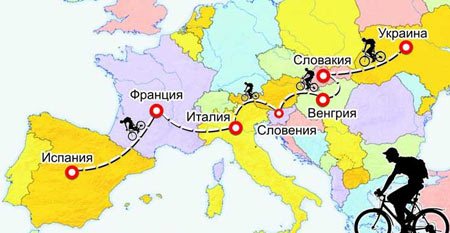
The more experience and impeccable visa history, the greater the chances. Those who are going abroad for the first time and immediately plan to apply for a multiple visa to Europe should prepare for refusal, since the chances are, objectively, minimal. But since they don’t charge extra money for the “multiple entry” checkbox on the application form, and if you refuse to issue a multiple entry visa, they will give you a short-term tourist visa, it’s worth trying your luck.
It will be easiest for tourists who have not only been abroad, but also visited Europe or other Schengen countries. And the more such visits there were, the higher the likelihood of receiving a multiple visa. In this case, it is not the duration of the trips that matters, but their number.
It is also easier to obtain a Schengen multiple visa for those who traveled on single-entry tourist visas to any countries participating in the agreement.
Having a history of receiving simple visas, you can already try to apply for a “cartoon”. Moreover, this should be done in stages. First for a short period of time, after its expiration - for a longer period.
It is also worth noting that not all countries are willing to provide multiple visas. For example, Austria and Germany are very strict about issuing multi-Schengen visas and usually issue short visas for 1-3 months. But some countries are more loyal to tourists.
These include:
- France;
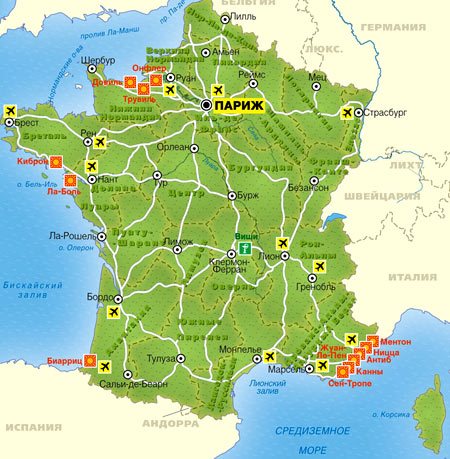
- Italy;
- Spain;
- Slovakia;
- Greece;
- Finland.
Some are interested in developing business relations with Russia, others are interested in the tourist flow from our country, and others simply make money by issuing visas to almost everyone. Therefore, the likelihood that a newcomer to the travel industry will be able to obtain a multiple visa is higher.
Greece
Greece has also already made many Russians happy with long multi-Schengen visas. At the first application, the Greeks issue a visa for the dates of the trip or for half a year, and the next time they can issue it for several years. Tourism is the main source of income for this country, hence the high loyalty to visitors.
- The countries that most often refuse Russians to obtain Schengen
; - 5 most common mistakes in visa application: remember and never do it
!
Documents for obtaining Schengen
Each country that issues a multiple visa requires you to provide its own set of documents. Despite some differences, additions and nuances, in general these lists are similar. Here is an approximate list that will allow you to form a general idea of what papers will have to be completed:
- A foreign passport, and its validity period must overlap the period of stay in the country by three months;
- Copies of pages of the passport of a citizen of the Russian Federation, which contain personal information, registration, information about marital status;
- Information about previously obtained visas up to the provision of an old passport. This is not a mandatory item, since the passport is confiscated upon expiration. But if you have copies, you should take them with you to your appointment at the embassy or visa center;
- Color photographs size 35*45 mm;
- Information about you from your place of work, including a certificate that should contain comprehensive information about the employing company and you as an employee;
- Certificate of solvency. The amount depends on how many days you plan to stay abroad. Each day is valued at 50 euros;
- Providing guarantees that you plan to return to Russia. Any documents are suitable for this, and the more the better, which will provide information about what is keeping you here: family connections, real estate, and other evidence;
- Medical insurance for travelers abroad. It must be valid for the period that you plan to stay in the Schengen countries. The minimum amount of coverage is 30,000 euros;
- Copies of round-trip air tickets or confirmed reservation. Originals will also be needed, but they can be provided later;
- 35 euros to pay the consular fee.
- Visa application form.
It is the last point that should be given special attention, since the success of the entire operation depends on the correct filling of some fields. To be sure of what information and how to write in these fields, it is better to contact the visa center for clarification.
The main requirement is that all information must be reliable.
When contacting travel agencies or companies specializing in preparing documents for obtaining a visa, the cost of their services can amount to thousands of euros. It depends on the country issuing the document and its validity period. At the same time, the amount of the consular fee will be tens of times less, in the range of 100-200 euros.

How to get a Multiple Visa?
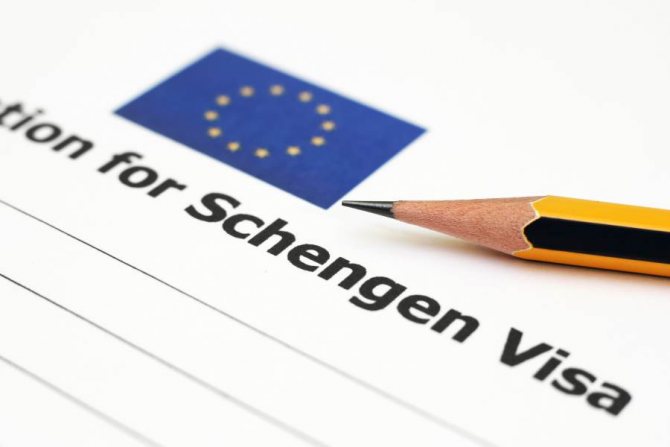
It should be understood that before obtaining a multiple entry visa, you must first prepare a wide range of documentation. If you are not ready to spend a lot of time, money and effort, then it is best to seek help from a multifunctional visa center; this will greatly facilitate the path to obtaining Schengen.
When starting to apply for a Schengen multiple visa, you need to decide in advance on the category:
- C1 – for one month;
- C2 – for 6 months;
- C3 – multiple visa for a year;
- C4 – for 5 years.
If you decide to independently apply for a multivisa, then be prepared to devote a lot of time to preparing documentation.
Receipt procedure
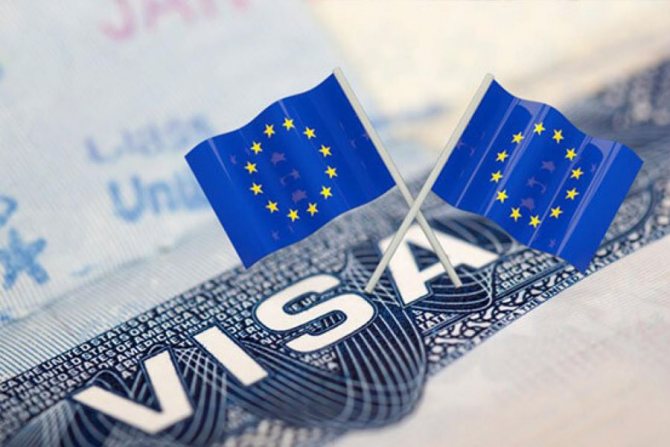
A Schengen multiple visa is issued through the consulate or embassy of any state that is on the list. At the same time, different visa centers have different lists of required documentation. The following list is an example:
- Valid passport;
- Photocopies of the main pages of the passport of a citizen of the Russian Federation;
- Data on all previously received passports, Schengen cards and visas;
- Three standard photographs 3cm by 4cm;
- Certificate from your place of work or your reference;
- Photocopies of pages of the work book (in some cases the original);
- Data on solvency – the amount depends on the country and time of desired stay;
- A list or certificate of obligations that guarantee the citizen’s return to the Russian Federation;
- Medical insurance;
- Air tickets, or railway tickets or their copies in both directions;
- Application form for a Schengen visa;
- Statement.
The list of documentation directly depends on which consulate the multiple visa is issued at. Each embassy provides its own list. The cost of a Schengen visa is 35 euros, regardless of which country’s consulate you apply for the document at.
How to get a Multiple Visa - submitting an application
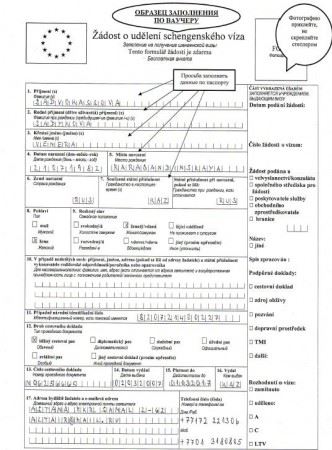
Despite the fact that the rules of a multiple visa allow you to visit 26 countries, you can apply for it at any representative office of one of the Schengen list states. Initially, you need to decide exactly where you will apply for registration. The representative office will give you a list of documentation that needs to be prepared. After this, the preparation of papers begins. It is important not to forget about solvency - you must have funds in your account for each day of your stay in the country you want to visit.
Interestingly, it is easiest to obtain a Schengen visa at the representative offices of the following countries:
- Italy - especially by invitation;
- Greece - easier tourist;
- France – easier for students;
- Finland - for residents of the northern part of the country;
- Spain - working.
You may be interested in: How to get a visa to the Czech Republic: documents, deadlines, cost and application process
It is more difficult to obtain this document in Germany and Austria. Be prepared for a visa refusal; in this case, you can apply for a regular visa, which is easier and faster.
Rules and procedure for use
There are 26 Schengen member countries, and the coveted visa can be obtained only at one representative office. This raises a number of questions, including how to choose the right state in which to apply for documents, in what order to visit the selected countries, and how long to stay in each of them.
These are quite reasonable clarifications, since even a single violation of the visa regime in the future may result in a ten-year quarantine. In order not to fall into a trap, or rather, not to set it up for yourself with your own hands, you need to have complete information.
In which country should a multiple visa be obtained?
If we discard the principle “where is it easier”, then the rules state that you need to apply for a document in the “main country of the Schengen zone”. This refers to the state where you plan to spend the most days during the validity of your multiple visa. Also, instead of days, you can count the number of entries.
In this case, it will not matter at all which countries, other than the main one, you visited and how many times, if the above parameters regarding the main state that issued the visa are met.
Often, when closing a visa, border guards can actually count the number of days and the number of entries, and if you do not meet the requirements, ask you a few questions, cancel your visa and put you on a blacklist that will not allow you to become a Schengen holder again.
First entry rule
Valid only if you apply for a visa to the state through which you plan to enter, and then spend the same number of days in all the countries you will visit. Otherwise, this rule does not apply.
For example, when receiving a Schengen multiple visa for Spain, it is not necessary to start your journey with it.
It’s enough just to spend a couple of days more on its territory during your vacation than in the other countries on your route. As a rule, the rule only applies if the periods of stay in the countries are equal. In simple terms, it doesn’t matter which country you entered through, what matters is where you spent the most time.

When traveling around Europe by car and with stops of the same duration in each country, it is better to use a visa with the right of first entry and draw up the document at the representative office of the country where you will cross the border for the first time.
Also, do not forget that in the visa application form you can indicate the country of first entry and provide tickets to the country of primary destination.
Why do you need a Schengen visa?
Many people believe that by refusing to obtain a Schengen visa, they are simply refusing to travel somewhere in Europe... This is not entirely true. There are many advantages of a Schengen visa.
1Having a Schengen visa, you get the opportunity to freely move around Europe to all 26 countries of the Schengen zone with one visa in hand! This provides ample opportunities for traveling around Europe by hitchhiking, in your own car (autotrips), as well as very cheap travel between European countries on high-speed trains or planes of numerous European low-cost airlines!
2The sooner you make your first trips to Europe, the sooner you will receive a multiple entry visa, which will save you time and money on obtaining short-term visas!
3Having a valid multi-visa in hand, you can go to any of the 26 (+4) European countries at any time, for example, if you see a very profitable sale of cheap air tickets on Aviasales or last-minute tours on Level Travel this coming weekend!
4Having a Schengen visa in hand, you can go to...Asia, Africa, Central and South America, visiting Europe and saving significantly on air tickets! The fact is that air tickets from Russia to most of these regions are very expensive. And from European countries, planes from European low-cost airlines fly there several times cheaper... For example, from Germany (Cologne, Memmingham), Hungary, Slovakia, to which, in turn, you can find cheap air tickets from Russia. As a result, it will be much cheaper to fly, for example, to the Dominican Republic, staying a few days in Germany, than just from Russia to the Dominican Republic...
Fulfilling visa obligations
In visa matters, honesty is one of the principles that should be followed. Or lie, but very skillfully, with the provision of all kinds of supporting documents.
Such cheap tricks as booking hotel rooms and canceling them after receiving a visa will not work, since the information will certainly end up in the representative office of the country where you received the Schengen visa, and, of course, the next time you apply, you are unlikely to get a positive result solution.
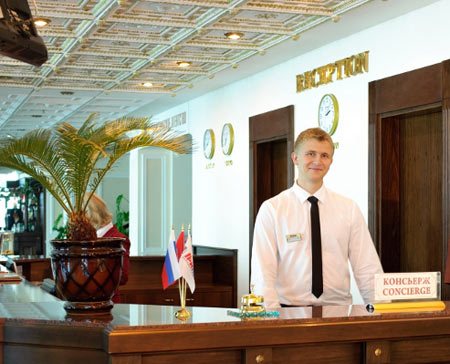
But there are still some tricks, tricks and little tricks. Developed over the years and the practice of hundreds of tourists, they help increase the chances of obtaining a Schengen multiple visa.
- You can prove the need to obtain a multiple visa by providing information about your own previously made trips to the country whose consulate you are applying for the document. This could be air tickets, hotel reservations, papers from work confirming frequent business trips.
- Using the first issued visa in full, that is, all 90 days out of a possible 90 in six months, will make it much easier to obtain the next multiple visa for a longer period.
- When entering Schengen territory other than through the state that issued the visa document, you need to come up with compelling reasons for your action. These can be both excuses and very real reasons. A business trip, participation in a symposium or exhibition, tickets to fly to the main country - most often anything will do.
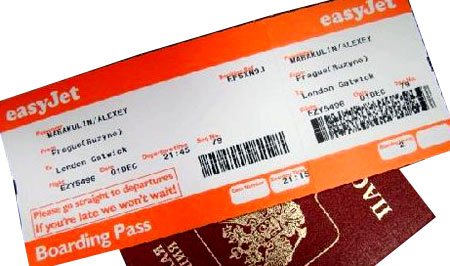
- A very powerful argument in obtaining a Schengen multiple visa will be the use of an invitation from business partners or relatives, acquaintances, or friends who live abroad.
